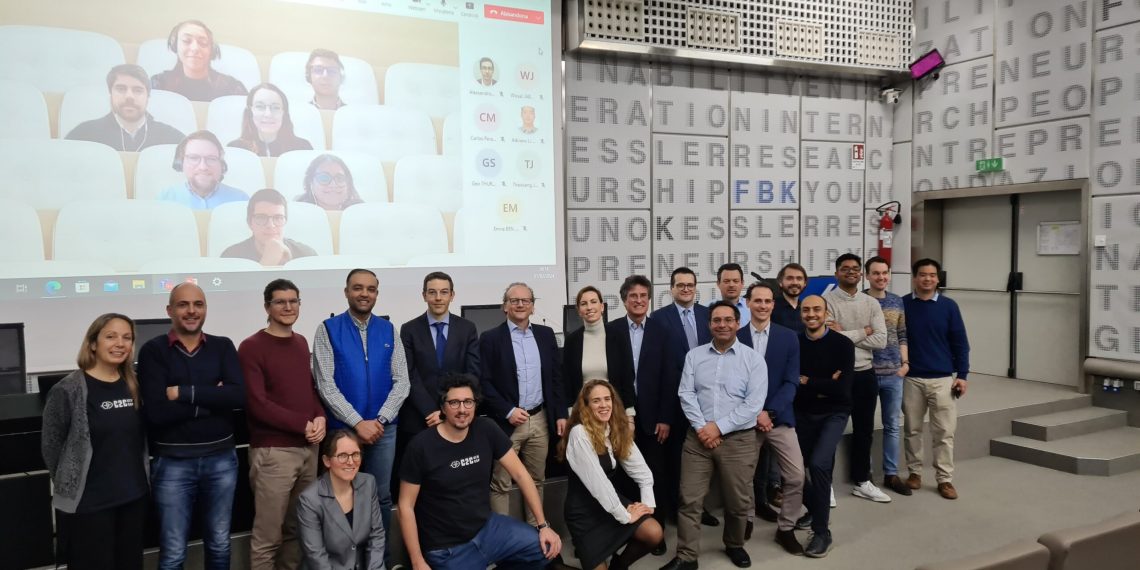SMHYLES is a European project that will develop and demonstrate new hybrid industrial-scale energy storage systems based on water and salt. INESC TEC is one of the 16 partners of this €6M project, supporting the design, implementation and demonstration of a hybrid storage system consisting of a salt-based battery and a water-based supercapacitor on Graciosa island (Azores).
One of the biggest challenges of the 21st century is the transition to sustainable, carbon-neutral energy sources. In this sense, reliable energy storage plays a key role, since generation and load peaks in the power grid require flexible storage systems that can be used for a wide range of applications. The new European project SMHYLES aims to develop innovative, sustainable and safe hybrid energy storage systems, based on salt and water – which combine two storage technologies and their respective benefits, like long-lasting capacity and high-power density. The new systems, low in critical raw materials, will also contribute to Europe’s energy independence. The SMHYLES project will combine a water-based supercapacitor with a redox flow battery or a salt battery to create innovative hybrid storage systems.
Each storage technology has technical and cost-effective features that are ideal for a specific application. These features include, for instance, energy and power density, reaction time, environmental sustainability, and operating safety. Redox flow batteries and salt batteries have a large storage capacity but can only be charged and discharged slowly. A supercapacitor, on the other hand, provides fast charging times but cannot store large amounts of energy over longer periods. Only the efficient combination of these two features provides a storage system with the required performance and flexibility.
INESC TEC will focus on combining a salt battery with a water-based supercapacitor to support the operation of the electricity grid on Graciosa island, in the Azores. Two of the three pilots will take place in Portugal (Graciosa island and Maia), and the other will be implemented in Germany (Pfinztal, Baden-Württemberg). INESC TEC will be part of the team responsible for sizing, commissioning and demonstrating the operation of the hybrid system planned for Graciosa island.
“To assess the impact on the island’s electrical system and the pilot hybrid storage system, and to demonstrate the requirements of compliance with the grid, the project will develop a digital twin of Graciosa island”. The INESC TEC team will also coordinate the planning of all the demonstration activities, and the commissioning activity of all the hybrid systems to be installed”, explained Helena Vasconcelos, INESC TEC researcher leading the project.
According to the project coordinator, Edoardo G. Macchi, head of the Battery and Electrification Technologies Unit at the Fondazione Bruno Kessler (Trento, Italy), “modern energy storage systems must ensure supply and operational security, as well as performance; they should feature flexible management software, and be manufactured/used in the most sustainable and environmentally friendly way possible”.
The SMHYLES project, coordinated by the Fondazione Bruno Kessler (Italy), is funded by the European Commission, under the Horizon Europe programme – €6M over a period of four years. The consortium includes 16 partners from seven countries – Portugal, Italy, Germany, Switzerland, Spain, Czechia, and Tunisia.
Disclaimer: Funded by the European Union. The views and opinions expressed are the sole responsibility of the author(s) and do not necessarily reflect those of the European Union or CINEA. Neither the European Union nor the entity that granted the funding can be held responsible.
The researcher mentioned in this news piece is associated with INESC TEC and UP-FEUP.




 News, current topics, curiosities and so much more about INESC TEC and its community!
News, current topics, curiosities and so much more about INESC TEC and its community!